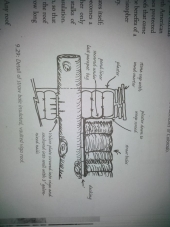My suggestion, and you are more than willing to FTMAPMITJIYTIIS (Fly to Maine and punch me in the jaw if you think it is stupid) would be to build a cedar dome shelter. We recently has a discussion on them. I have never lived in one, and the photo I showed was just a toy to show my young daughters how to build one, but others have said they are very comfortable. I used to build them as a kid and stayed a few times overnight in them in the dead of winter and found them warm...and I live in Maine! In that case the other guys just used branches to form a dome, or in lean too shelter like mine, draped it with plastic, and then lived in that.
As you live in there, rain free, you could build your walls up in earth bag fashion, making the structure refined as time marches on. I could easily see that being done for $1000 in materials even if you blew some of your budget on a great woodstove (used).

Try doing a photo search on Primative Shelters for ideas.
Where I live, 100 years ago Colliers and Surveyors for the logging companies used to build bark lined cedar domes to survive.







